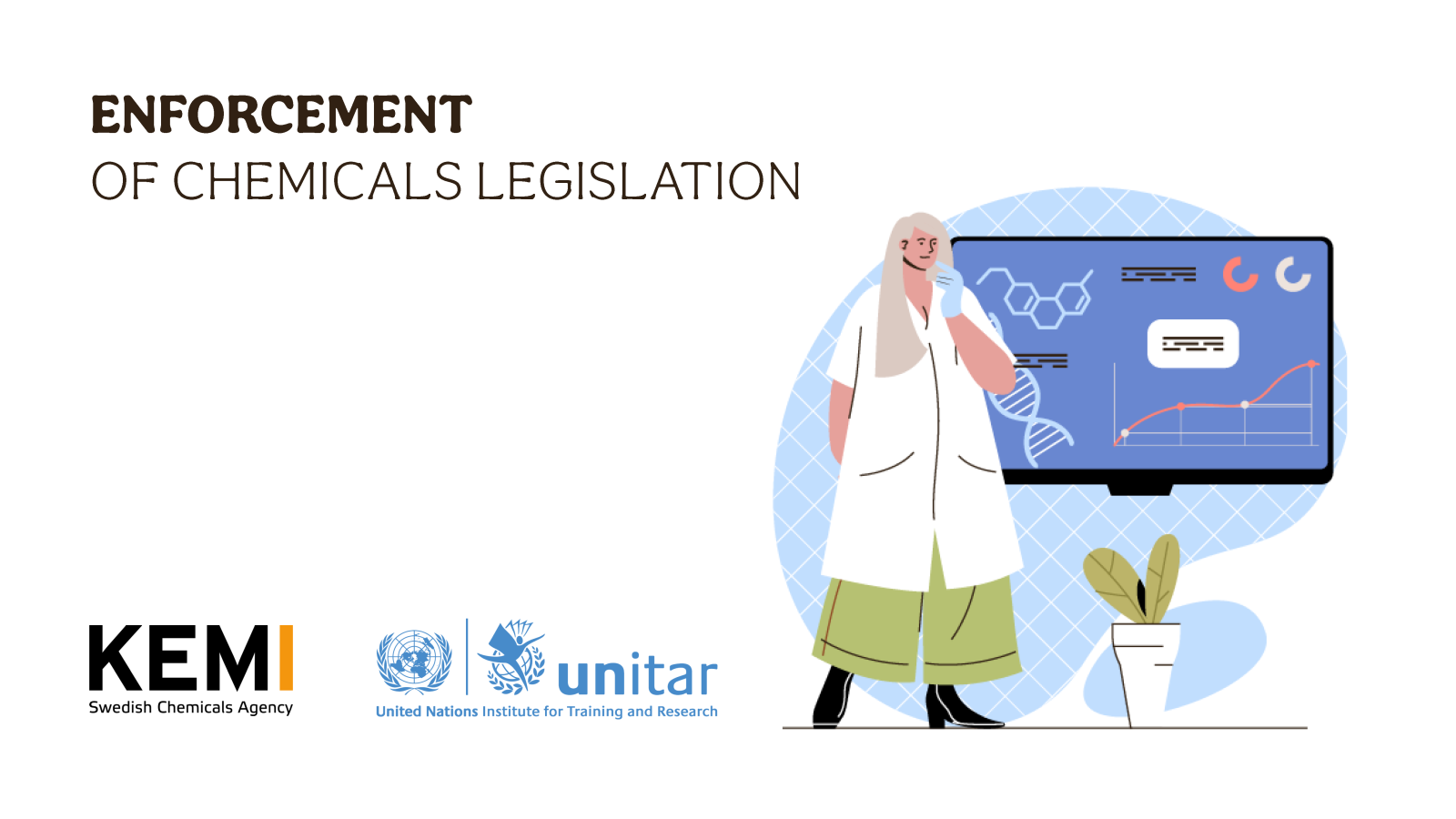
Enforcement of Chemicals Legislation
KEMI
After taking the course, participants will be able to:
- Describe the importance of compliance and enforcement of national chemicals laws
- Explain the importance of inspections to ensure compliance with national chemicals laws
- Describe the steps in the inspection process
- Identify the tools available to enforcement authorities
This course is based on the Swedish Chemical Agency - KemI publication on “Enforcement of legislation on chemicals placed on the market” one of a series of guidance documents developed to complement the UNEP Guidance on the Development of Legal and Institutional Infrastructures and Measures for Recovering Costs of National Administration (LIRA Guidance) by giving more detailed guidance in different areas.
The aim of the present course is to guide participants through the design and implementation of an efficient system for the enforcement of legislation on chemicals placed on the market, covering substances as such or when used in mixtures or in articles.
Module 1 - Why is enforcement necessary?
Content
1. Introduction to the role of legislation and the purpose of compliance and enforcement
2. Introduction to the legislative process towards compliance and enforcement
3. Clear rationale and (local) evidence supporting the legislative actions
4. Stakeholder considerations in the legislative process; boosting trust, compliance and aiding enforcement
5. Clear and easy to understand legislation, clear responsibilities and consequences;
6. Inspections and sanctions as drivers towards compliance
Module 2 - Roles and responsibilities
Content
1. The role of industry in compliance and reporting
2. The role of governments in enforcement and inspection
Module 3 -Market surveillance supported by control at the border
Content
1. Responsibilities for ensuring that products on the market are sold in compliance with the legislation
2. Description and examples of market surveillance and inspections and border control
3. Competencies required for market inspection
4. Systems for documenting records of inspections
5. Role of customs officials in border controls
6. Linkages to reporting for conventions (e.g. information contained in export notifications) and information found on labels and SDS, or harmonized customs codes
Module 4 - What should be inspected?
Content
1. Classification, labelling and safety data sheets (GHS)
2. Restrictions and bans
3. Reporting requirements
Module 5 - Who should be inspected?
Content
1. Introduction to the supply chain; the roles of producers and formulators; importers and wholesalers; distributors and retailers; markets, public services
Module 6 - Who should inspect?
Content
1. Competences needed for inspection
2. Analysis and the use of laboratories
3. Confidentiality
Module 7 - Measures when observing violations
Content
1. Measures taken when a case of non-compliance is detected
2. Tools available for enforcement
Module 8 - Inspections • Practical guidance
Content
Part I: planning and on-site checklist
1. Strategic planning and cooperation
2. General guidance on the inspection
Part II: inspection of key stakeholders
3. Inspections of producers and importers
4. Inspections at retailers
The course, about 45 minutes to complete, is self-paced and adapted to the schedule of full-time working professionals. Participants are provided with the opportunity to learn through various experiences: absorb (read); interact (activity); and reflect (relate to one’s own reality). This includes videos, interactive lessons, reading materials and quizzes.
Despite being self-standing, the 4 modules of the course must be completed in order.
Each module concludes with a quiz which will assess the knowledge learners will acquire. If learners pass the quiz with a 100% mark, a certificate of completion will be issued to them.
Participants will be requested to provide feedback on the course by filling in a feedback form after completing all the modules, accessible anytime.
This course is targeted at national chemicals officials but is intended to be of interest to a broad range of sectors and stakeholders involved in chemicals management at the national level (e.g. agriculture, environment, health, labour, trade and industry, transport).
It will be of particular relevance to officials with responsibilities for enforcement and inspections under chemicals control legislation.
The course can be completed on any computer (Windows and Mac) or mobile device. Any internet browser is compatible as long as it has been updated to its latest version.

